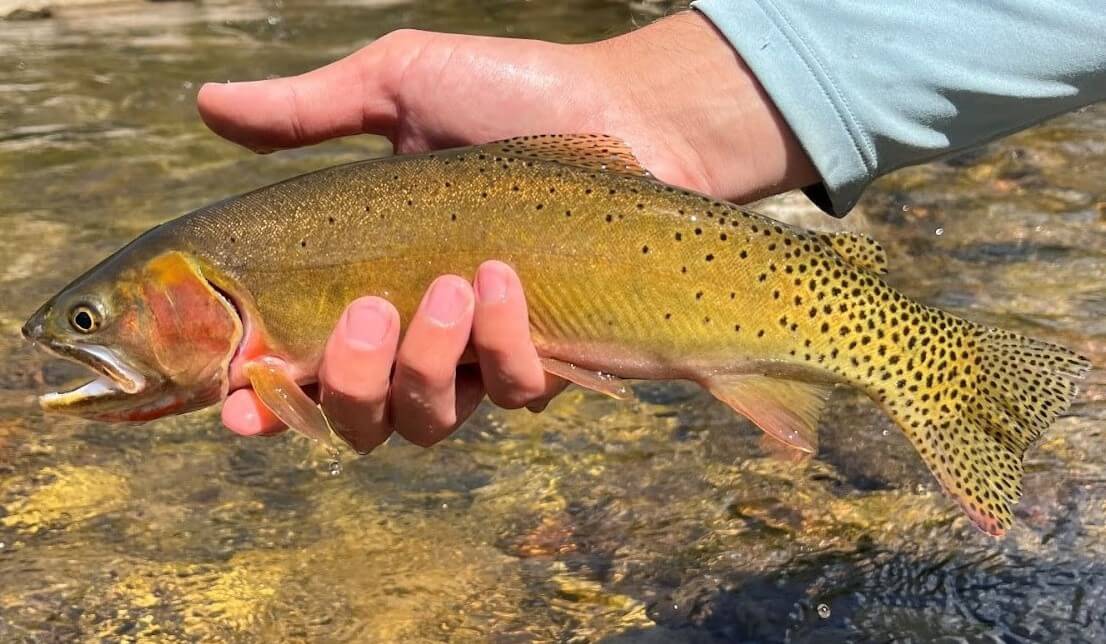
10 May Identifying Cutthroat Trout
By Hayden Cook – Assistant Slam Director for Utah Trout Unlimited
Utah is home to many popular sportfish species, with trout being one of if not the most popular fish for anglers to catch. Yet even among trout, there are so many species to choose from. Rainbow trout are widely stocked in our lakes and reservoirs, and brown trout are found throughout Utah’s most popular river systems. We even have brook trout and tiger trout that inhabit many of our high altitude lakes and streams. But of course, who can forget Utah’s native trout species, the cutthroat trout, which can be found in any of these water systems as well. When people begin to chase cutthroat specifically for the Utah Cutthroat Slam it becomes very important to be able to tell which trout species is which. Every year we get a few Slam submissions where someone has taken a photo of the wrong trout, and then those anglers must go back out and attempt to catch the correct species again. For that reason, a detailed look at what makes a cutthroat a cutthroat seems advantageous, and hopefully after reviewing this list, you will have no doubt in your mind whether you’ve caught a cutthroat or not.
As a preface, all these points are generalizations of what you are going to see in nature. In the wild, there will always be strange exceptions or examples of fish that may not fit the norm for what we would expect from a standard cutthroat trout. Plus, this list really only applies to cutthroat found in Utah, as some subspecies outside the state exhibit appearance traits not discussed in this list. But in general, these identifiers should certainly help narrow down a cutthroat compared to any other trout in Utah.
- The “Cutthroat” – All cutthroat trout are going to display the characteristic jaw slash which gives cutthroat their name. Looking like someone literally CUT the THROAT of the fish, this red/orange marking or slash can be found just under their mouth, and sometimes only becomes visible when the cutthroat opens its mouth. No other fish in Utah will display this specific identifying mark unless they are a cutthroat (we will discuss hybrids later.) At times these markings can become faint or sparse, especially in large adult cutthroat, but its presence can usually be detected, and sometimes it is very obvious as pictured below.
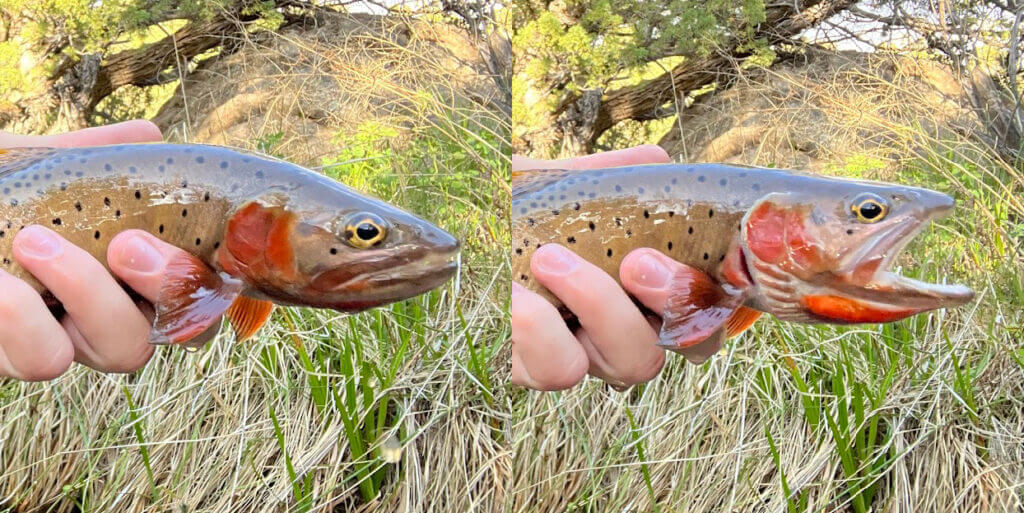
- Spotting Patterns – Cutthroat trout generally display very similar spotting patterns. Utah’s cutthroat will have larger sized black spots rather than the finer speckles found on some rainbow trout. These spots can present across their entire body, but are usually sparse towards the head and become particularly dense towards the tail. There can be a lot of variation in the size, shape, distribution, and number of spots, but the pattern is usually detectable. Just look for fewer spots around the head that form a gradual gradient of more spots towards the tail, with more spotting occurring higher on the sides and back of the cutthroat than on the belly. Spots also tend to get bigger when they get closer to the tail. The cutthroat pictured below display classic examples of cutthroat spotting patterns.
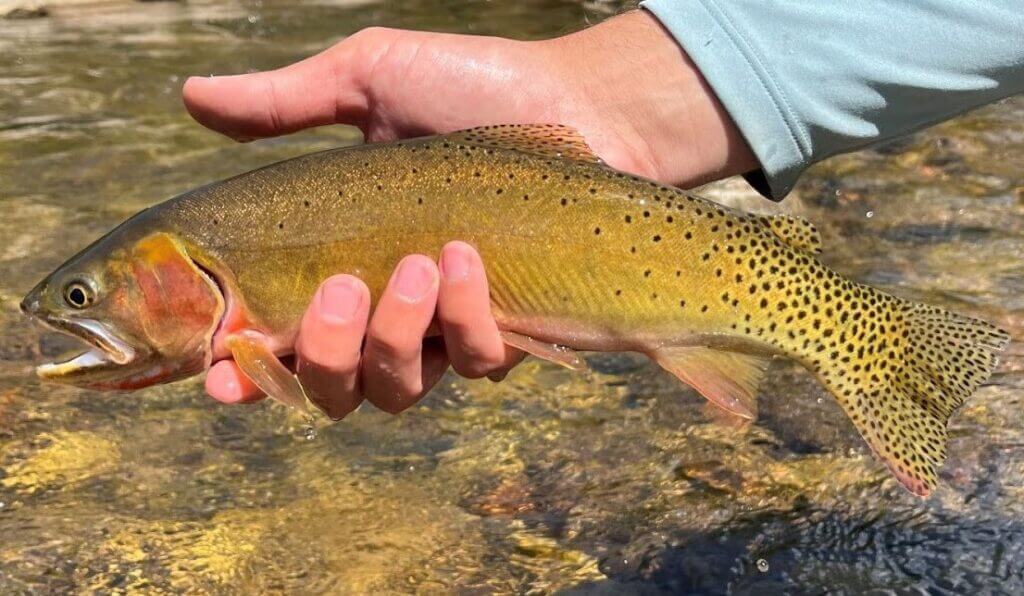
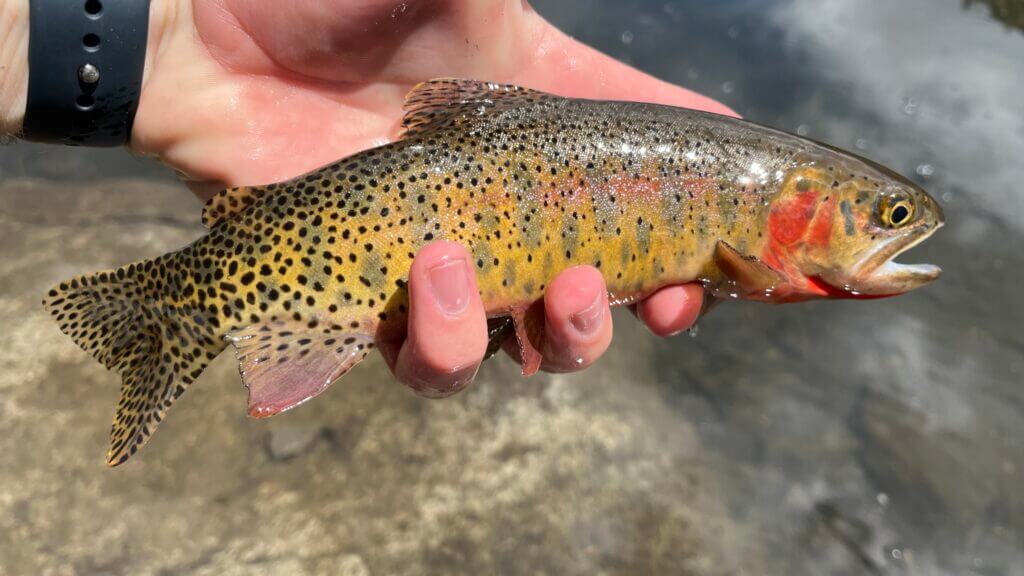
Note that on some fish (particularly the Colorado River cutthroat found on Boulder Mountain) their spots tend to be smaller and have more of a “paint-splatter” look than the larger individual spots of other subspecies, yet the cutthroat pattern of spots getting larger and more dense towards the tail is still recognizable.
- Pinks and reds – Cutthroat will of course present with their red jaw slash, but among their palate of colors will be hues of pink or red in varying intensity. Cutthroat often display “rosy cheeks” where their gill plates appear pink. But when Spring comes and it’s time for spawning, all their colors become more dynamic, with even slight pinks turning into deeper reds. Spawning cutthroat can become especially stunning as their bellies and gill plates become a brilliant, bright red. Some cutthroat may even display pink or red along their lateral line (this is usually an identifier of rainbow trout, but it can become visible especially during the spawn on cutthroat too.) This dynamic color change is especially obvious with Colorado River cutthroat trout, one of the four subspecies required for the Slam. Some of these fish may even display dark red colorations on their body throughout the year, not only during the spawn.
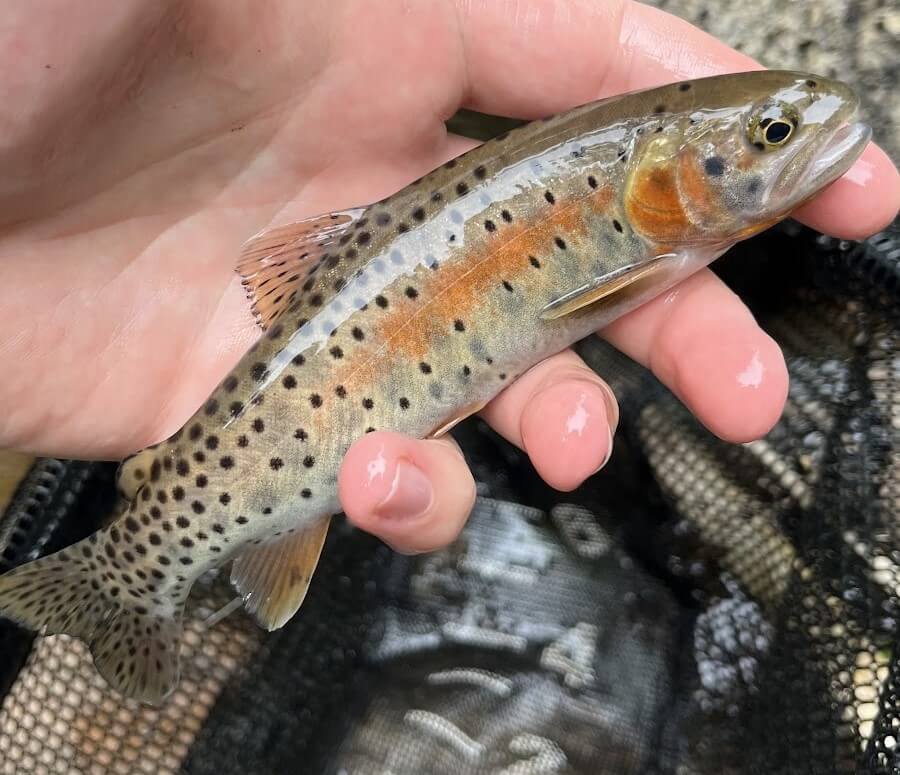
- Parr Marks – Though not a specific feature of cutthroat, it is good to know that juvenile and smaller cutthroat trout can display parr marks, which are lighter colored oval spots along the length of their body. As trout grow larger, these parr marks lighten up in appearance and even disappear altogether in adulthood.
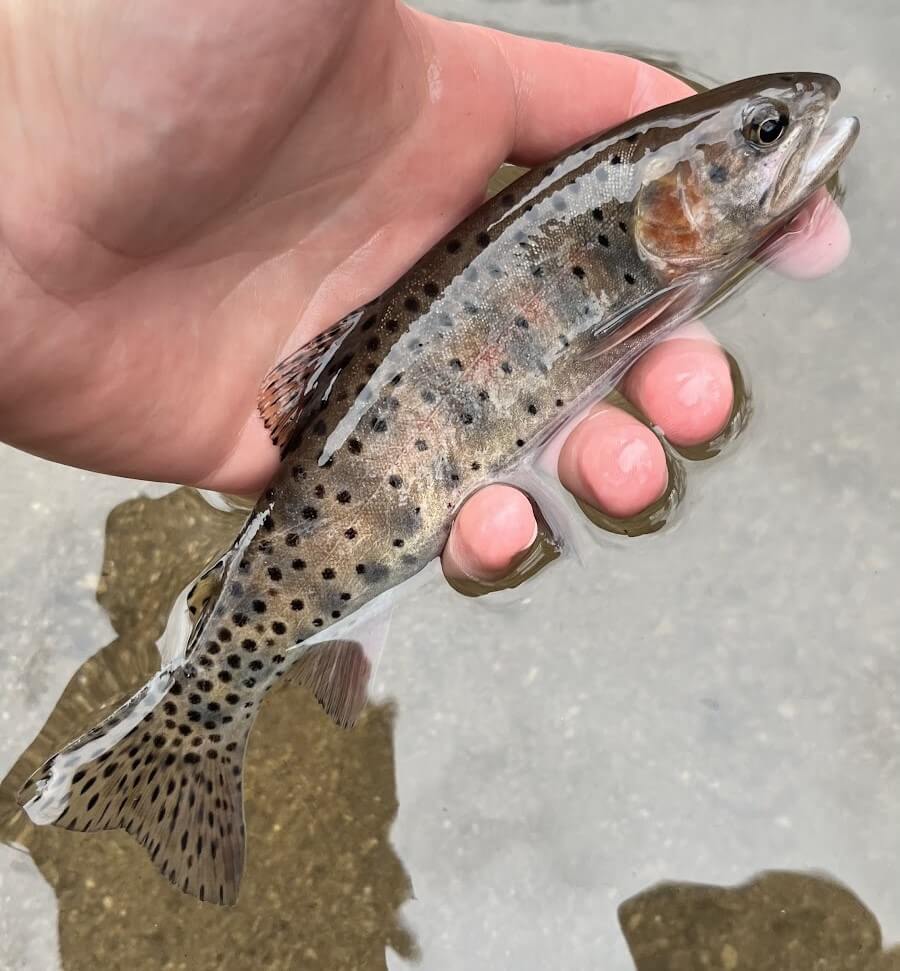
- Body Color – Cutthroat trout can vary in color quite dramatically depending on their genetics, where they live, and what stage of life they are in. Generally, small to medium sized cutthroat will have olive/green/brown-ish colored backs, lighter grey/green/yellow/beige colors across their body, and an even lighter belly being white/silver/cream colored in appearance. Trout in river systems tend to be darker colored while cutthroat in larger, deeper lakes can become lighter and more silver in appearance, this is especially true of Bear River and Bonneville cutthroat trout. As mentioned above, while spawning, cutthroat will become quite a bit darker and even exhibit black, grey, and red colorations on their bodies. Colorado River cutthroat are distinct in that they often exhibit more orange, gold, and red colors across their body year round, making them slightly more visually distinct from other cutthroat in the Slam. And we have also noticed through photo submissions that our native Yellowstone cutthroat in the Raft River Mountains often tend to have more of a yellow hue to their base body color.
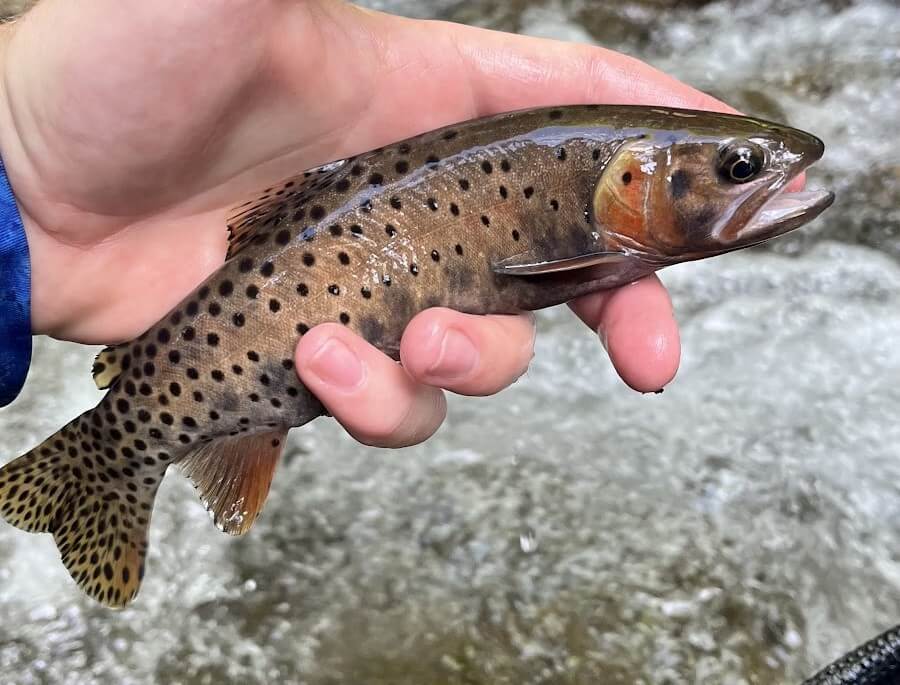
- Check the Fins – Cutthroat fins will usually be similar in color to the body of the fish, but often have an orange hue to them. This is especially true in lake dwelling Bear River cutthroat trout. The bright orange fins of these fish stand out in contrast to their silvery bodies. Spotting occurs on the dorsal, adipose, and tail fins, and varies on the anal fin, though spots usually aren’t found on the pectoral or pelvic fins. But what cutthroat shouldn’t have is a white tip to any of their fins. White-tipped fins are a distinguishing mark found on rainbow, brook, and brown trout, but not cutthroat trout.
- Hybrid Cutbows – When native cutthroat trout and non-native rainbow trout have the opportunity to spawn, they create a hybrid fish commonly referred to as a “cutbow.” Cutbows are particularly confusing to anglers as they can exhibit a range of visual cues that cross cutthroat features with rainbow features. Often what happens is anglers spot the red jaw slash and immediately assume it must be a cutthroat. But upon closer examination, these fish will also have key rainbow trout markings. In the cutbow I’ve caught, I usually first notice that though they have the signature cutthroat slash, they also have white-tipped fins on their dorsal, pelvic, and/or anal fins, a dead giveaway of hybridization. You may also notice their body color seems more silvery and their spotting pattern doesn’t match the distinct head-to-tail gradient found on pure cutthroat. Rainbow trout will display a more even distribution of spots across their body from head to tail, so if your “cutthroat” is looking silvery and has even spotting from head to tail, be cautious in calling it a real cutthroat. Rainbow trout also have a distinct pink marking along their lateral line, and while cutthroat can have a similar marking, it is generally not as big or pronounced. Cutbows can present with any of the rainbow trout features mentioned and ultimately some fish can be very hard to distinguish. So just be careful your “cutthroat” doesn’t have white-tipped fins and strange coloring or patterns, as these fish cannot be counted towards the slam.
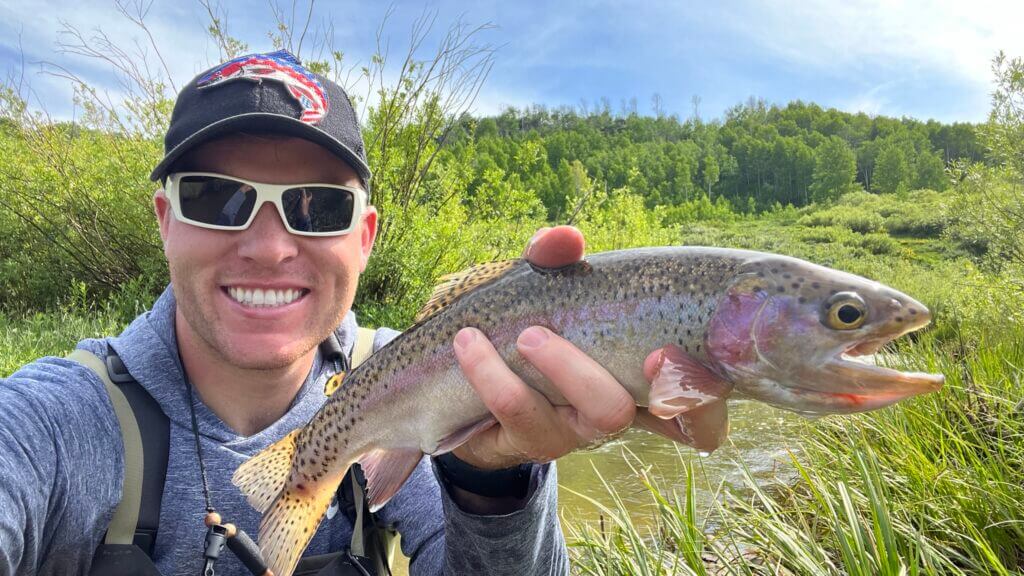
In the vein of cutthroat identification for the Slam, we often see photos posted where anglers ask, “Which cutthroat subspecies did I catch?” In these scenarios, the angler is usually asking how to identify their cutthroat based on what you see visually alone. In reality, almost all cutthroat subspecies can look interchangeable with each other, and while we have mentioned some general trends you may see in certain subspecies, there can always be exceptions or variations that make it hard to definitively ID a cutthroat based on visual examination alone. The determining factor will always be which river drainage the cutthroat was caught from. Maps displaying highlighted drainages of where cutthroat subspecies are located can be found on the Slam website, so be sure to reference those to find out which subspecies of cutthroat you’ve caught. Utah doesn’t manage separate subspecies of cutthroat in a single water body, so even if you catch two cutthroat that look very different from the same lake or stream, they are going to belong to the same subspecies.
However, one drainage where you CAN count your cutthroat as either a Bonneville cutthroat trout or Bear River cutthroat trout is the Weber River drainage which includes notable locations like the Weber River, Ogden River, Lost Creek, Echo Creek, Beaver Creek, and many other tributaries in those drainages. While these waters are not in the Bear River Drainage, we know today through DNA analysis that the Bonneville cutthroat trout in the Weber River drainage were able to historically mix with Bear River cutthroat trout. This was due to geological events which redirected the Bear River into the Bonneville Basin thousands of years ago. So though today the Weber River drainage is only managed and stocked with Bonneville cutthroat, there are traces of Bear River cutthroat genetics in some of its populations. Thus, for the Slam, it is allowed that cutthroat trout angled in the Weber River drainages can count towards either the Bear River or Bonneville cutthroat catch requirement. This helps give anglers a little more flexibility in their catch locations for the Slam. Do keep in mind that you can only claim ONE cutthroat for your slam from the Weber drainage, NOT BOTH. For example, if you claim a Bonneville cutthroat catch from the Weber River, then you need to catch your Bear River cutthroat from a different drainage, or vice versa. And when it comes to the appearance of the fish from this drainage, expect them to pretty much appear identical to other pure Bonneville cutthroat from other drainages. The Bear River cutthroat DNA only consists of <10% of the total genome in certain populations, so the primary features will be more Bonneville cutthroat in appearance than Bear River cutthroat.
If you have further questions about approved Slam locations or cutthroat identification, please refer to the resources on the Slam website, reach out to us via email, or through our social media accounts. Hope this has helped clear up what makes a cutthroat a cutthroat and good luck as you complete your own Slams.
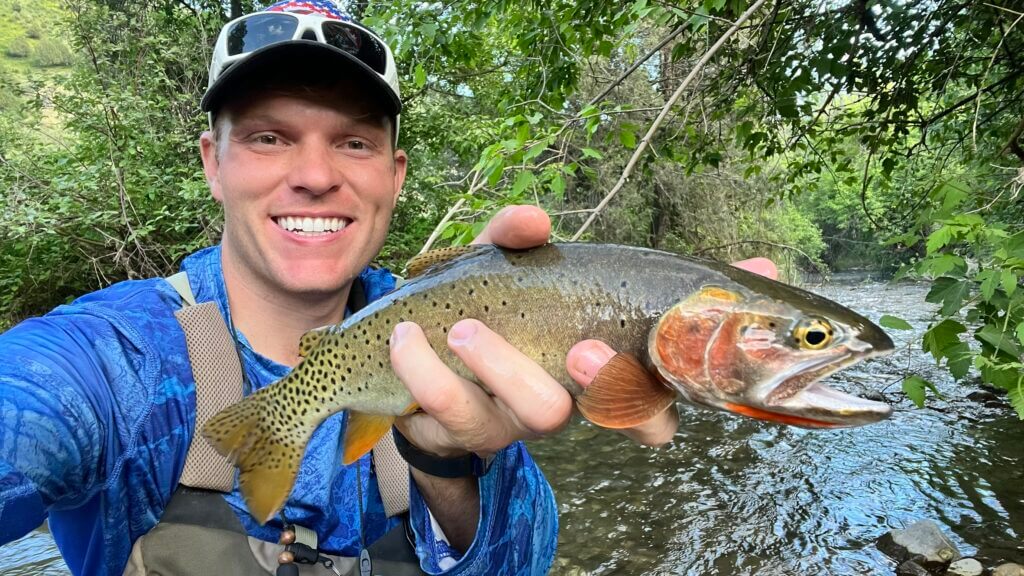
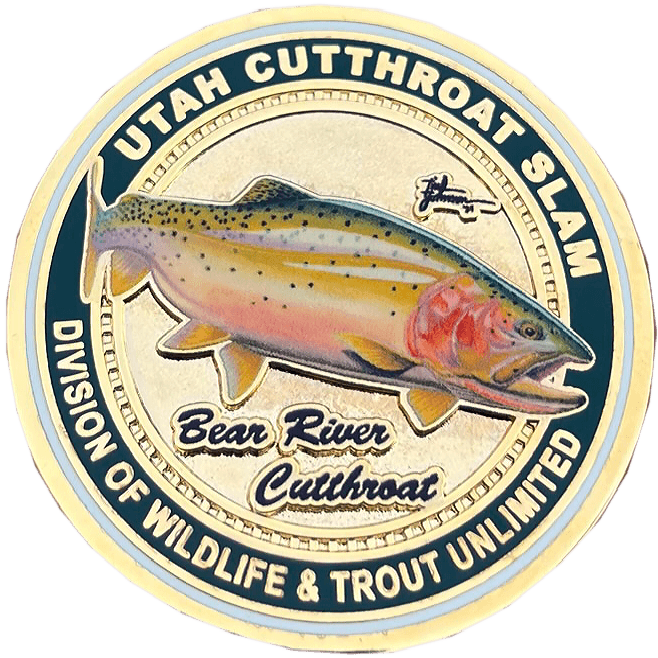
No Comments